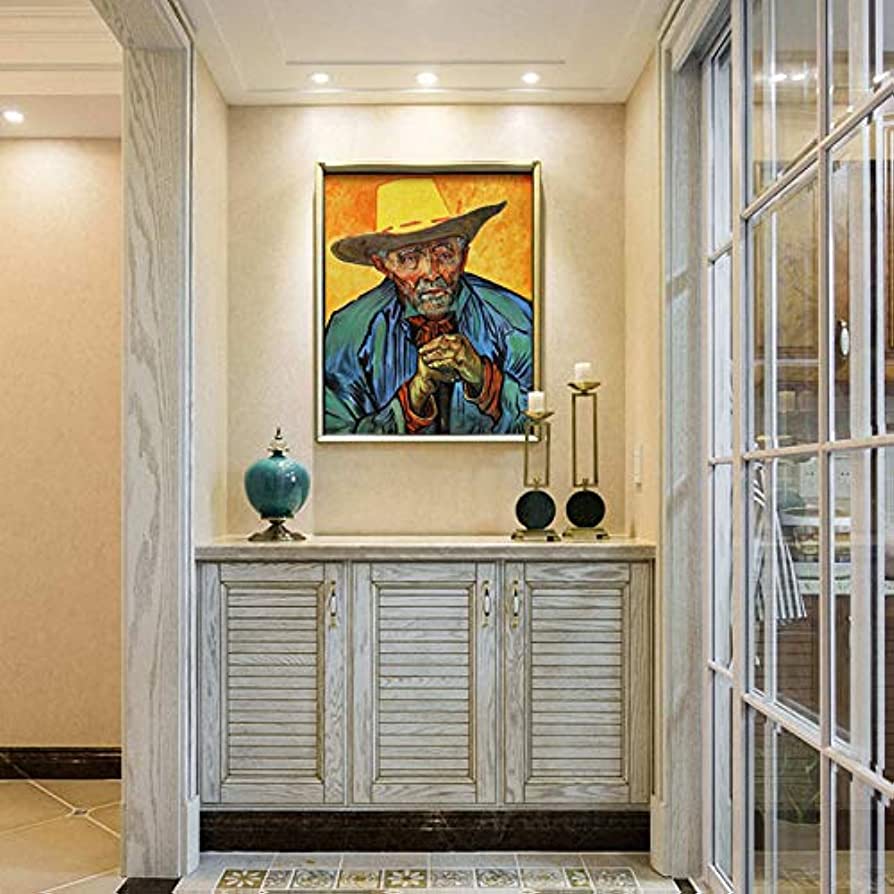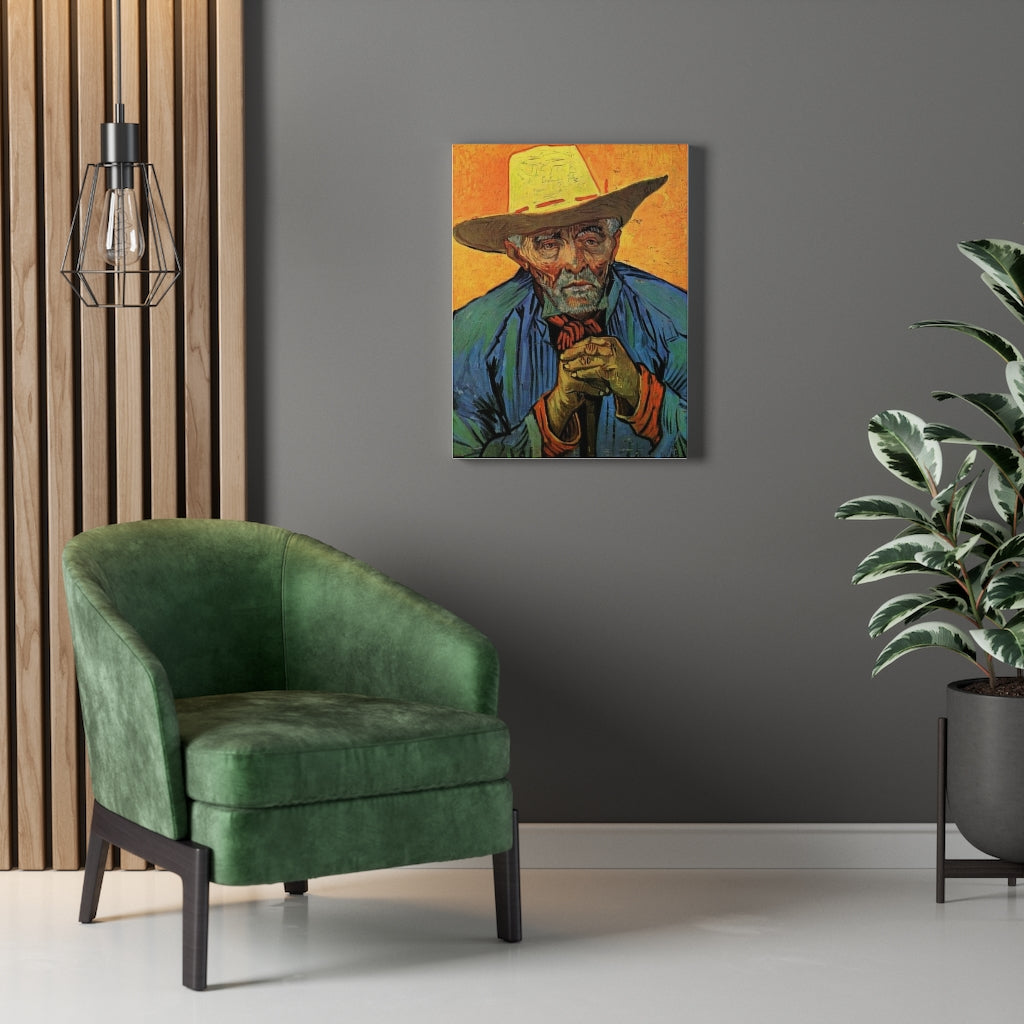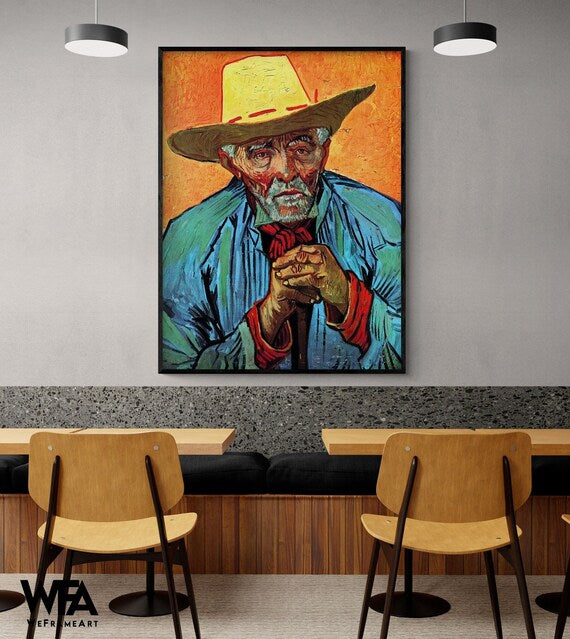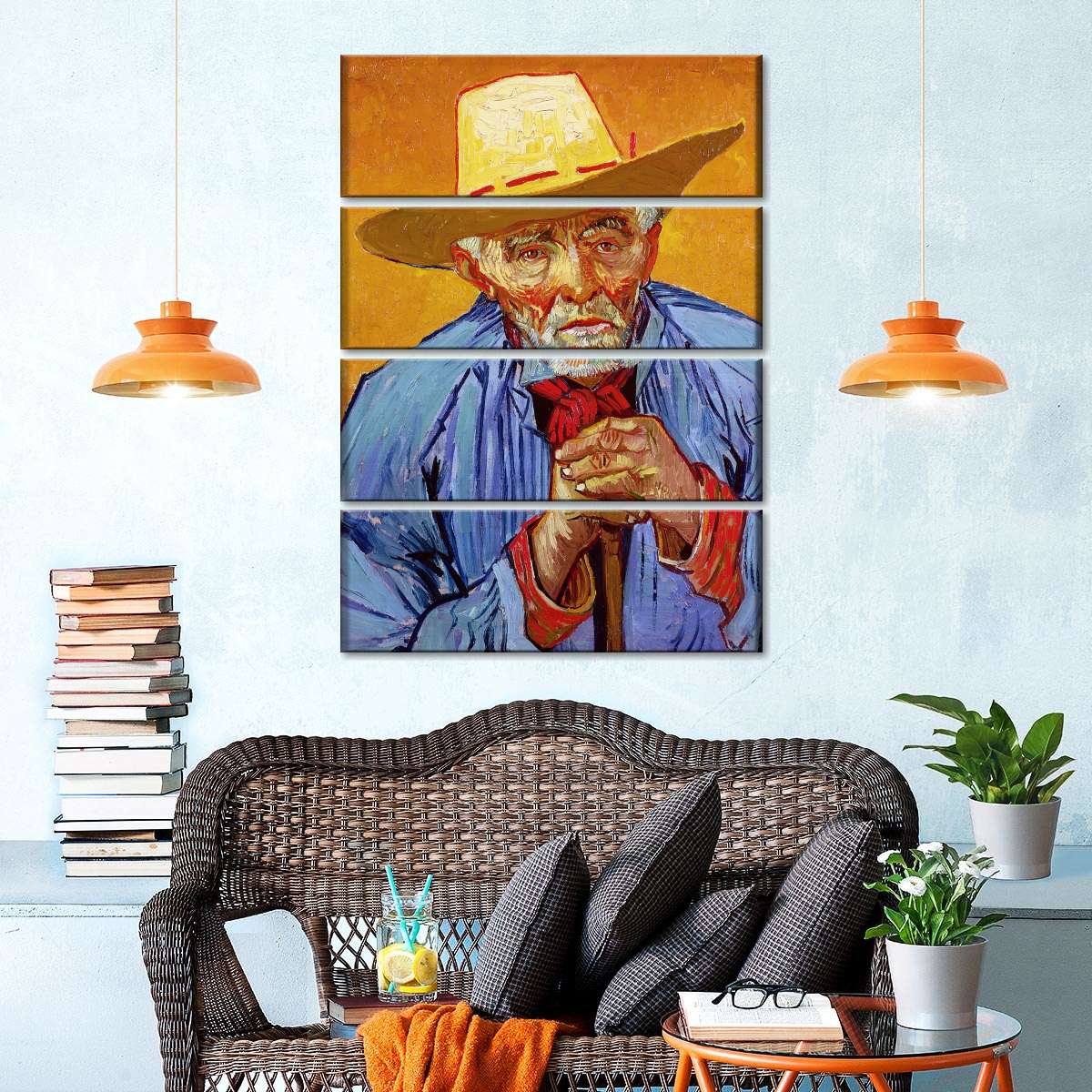Description
Portrait of Patience Escalier is a work by the famous Post-Impressionist painter Vincent van Gogh, created in 1888. This portrait is especially interesting because Van Gogh painted it during his stay in Arles, in the south of France, a period that is considered one of the most productive and important part of your career.
Patience Escalier was a shepherd and former farmer who became a model for Van Gogh during his time in Arles. The choice of Escalier as the subject of the portrait reflects the artist's interest in depicting the common, hard-working people of the time. Van Gogh considered peasants and workers, like Escalier, to embody the nobility and dignity of hard work, and he wanted to capture that essence in his paintings.
In "Portrait of Patience Escalier," Van Gogh uses bold, expressive brushwork and a vibrant color palette characteristic of his Post-Impressionist style. The bright yellow background contrasts with Escalier's weathered face and hands, highlighting his experience and life as a manual worker.
In addition, the blue jacket that Escalier wears in the portrait was an intentional element of Van Gogh's to establish a contrast with the painting "Portrait of a Peasant" by Jean-François Millet, one of the artists he most admired. This decision shows the influence that Millet had on Van Gogh's work and his interest in connecting his art with the French pictorial tradition.
During his stay in Arles, Vincent van Gogh was deeply inspired by nature and the rural landscapes that surrounded him. This environment provided him with a large amount of material for his paintings, such as representations of peasants, such as Paciencia Escalier, and scenes of daily life in the countryside. In this period Van Gogh also experimented with light and colour, his palette becoming brighter and more luminous.
Regarding the technique used in "Portrait of Patience Escalier", Van Gogh applied the paint in a thick and energetic way, which is known as "impasto". This technique creates a remarkable texture on the surface of the painting, adding a sense of depth and three-dimensionality to the portrait. The short, rapid brushstrokes, together with the impasto texture, make the portrait appear very alive and dynamic, allowing the viewer to appreciate the effort and emotion that Van Gogh put into his work.
It is interesting to mention that Van Gogh created two versions of the portrait of Paciencia Escalier. Both versions are quite similar in composition and color palette, but differ in some details and paint application. The first version, made in August 1888, is currently in the Norton Simon Museum in Pasadena, California, while the second version, made a month later, is in the private collection of the Niarchos family.
These two versions illustrate the importance that Van Gogh attached to experimentation and evolution in his work, always seeking to improve and perfect his technique and his representation of the subjects he chose.





